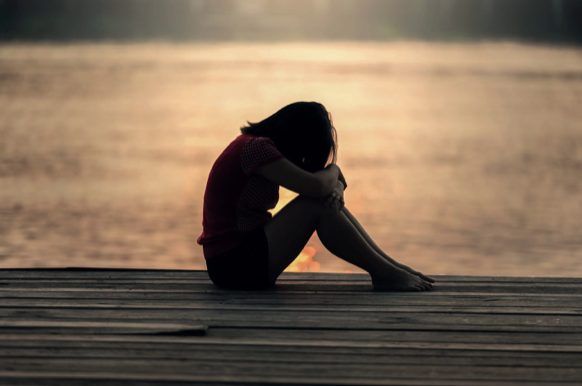
May kicks off National Women’s Health Month. Data shows women make up 65 percent of total opioids prescriptions, and younger ages are not immune to opioid addiction with or without a prescription, either (1).
As GameChangers, it’s a perfect opportunity to look at how substance abuse affects girls, teens, and women. Let’s explore key differences and how they affect those struggling with addiction.
3 Key Differences in How Addiction Affects Women
Women are at higher risk of a fatal overdose.
Biological differences in hormones, body size, and composition place biological females at a disadvantage when it comes to overdose. In fact, women using opioids have an increased chance of going to the emergency room or dying of overdose (2).
Although more men die from prescription drug overdoses than women each year, the gap is closing. The death rate for women has increased faster for women than men — at a whopping 642 percent since 1999 (3). This rate is especially prevalent in Appalachian areas, like West Virginia, where prescription opioid rates are the highest (4).
Women who use opioids may experience unique and deadlier impacts on bodily organs and processes.
While both men and women experience common symptoms of opioid use such as dizziness, sleepiness, and more, women are uniquely susceptible to opioids’ negative impact on: (5).
- The menstrual cycle
- Fertility
- Pregnancy
- Breastfeeding
- Brain changes
- Heart and blood vessels
During pregnancy, using opioids can be risky for both mother and child. Opioids increase the risk for miscarriage and stillbirth while putting the mother at higher risks for migraines, seizures, and high blood pressure. After birth, babies of mothers who used opioids during pregnancy can go through withdrawal, which can cause seizures, poor feeding, slow weight gain, and other negative health consequences.
If you or a loved one are struggling with addiction while pregnant, talk to your healthcare provider about alternative pain management methods and seek help. Work with a doctor and a credible facility to wean off opioids safely and gradually.
Women face unique barriers to care when seeking treatment for opioid abuse.
Admitting you have a problem and reaching out for help is a tough step for anyone struggling with addiction. For girls and women, though, it may be even harder. Research shows the female sex faces stigma when entering opioid abuse treatment programs, especially if they have children or are of childbearing age (6).
Stigma brings layers of judgment and shame into the picture, two emotions that are challenging for youths, teens, and adult women to overcome on the way to recovery. This stigma is even greater among pregnant and postpartum teens and women, who are less likely to seek prenatal or postnatal care or treatment for addiction as a result (7). The same research shows it may feel harder for women to step away from the demands of childcare, work, and home responsibilities to get the help they need.
If you or a loved one struggles with addiction there is hope.
Girls, teens, and women may face challenges to recovery, but hope exists and help is available. Talk to someone you trust and connect with a professional to start your recovery journey today.
Need help getting started? Browse GameChanger’s recovery resources.
About GameChanger
Created in 2018, GameChanger is a student-powered movement with focus on substance misuse prevention among youths. We connect students, educators, and communities with education, training, coaching, and support services to prevent opioid and other drug use before it starts.
References
- An Analysis of the Impact of Opioid Overprescribing in America. United States for Non-Dependence. 26 September 2017. Accessed from: https://www.planagainstpain.com/wp-content/uploads/2017/09/PlanAgainstPain_USND.pdf
- The Differences In Addiction Between Men And Women. Addiction Center. Bezrutczyk, Destiny. 02 February 2023. Accessed from: https://www.addictioncenter.com/addiction/differences-men-women/
- Opioid Use Disorder in Women and the Implications for Treatment. Celestina Barbosa‐Leiker, Ph.D., Aimee N. C. Campbell, Ph.D., R. Kathryn McHugh, Ph.D., Constance Guille, M.D., M.S.C.R., Shelly F. Greenfield, M.D., M.P.H. 2021. Accessed from: https://onlinelibrary.wiley.com/doi/pdf/10.1176/appi.prcp.20190051
- McDonald DC, Carlson K, Izrael D: Geographic variation in opioid prescribing in the U.S. J Pain 2012; 13(10):988–996
- Substance Use in Women DrugFacts. National Institute on Drug Abuse. January 2020. Accessed from: https://nida.nih.gov/publications/drugfacts/substance-use-in-women
- Huhn, A.S., Dunn, K.E. Challenges for Women Entering Treatment for Opioid Use Disorder. Curr Psychiatry Rep 22, 76 (2020). https://doi.org/10.1007/s11920-020-01201-z
- Your Words Matter – Language Showing Compassion and Care for Women, Infants, Families, and Communities Impacted by Substance Use Disorder. National Institute on Drug Abuse. Accessed from: https://nida.nih.gov/nidamed-medical-health-professionals/health-professions-education/words-matter-language-showing-compassion-care-women-infants-families-communities-impacted-substance-use-disorder